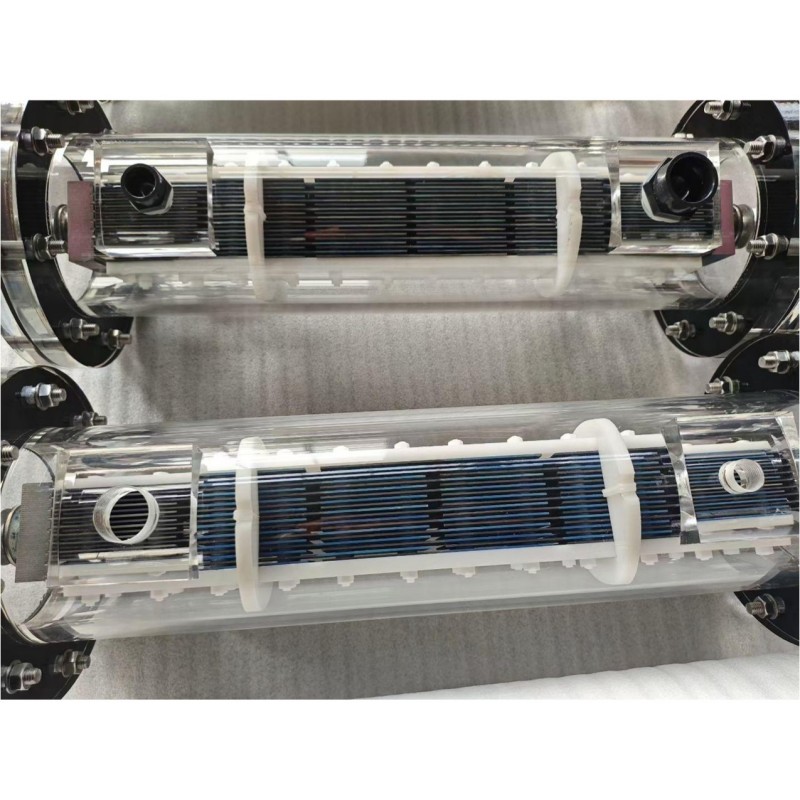
200g/h Ruthenium-Iridium coating Polarity Reverse Electrolyzer
The electrolyzer is fed a DC current from the rectifier and electrolyzes the diluted brine into sodium hypochlorite solution. Chlorine evolves at the anode surface, while hydrogen and hydroxide evolves at the cathode surface. The secondary reaction of chlorine, sodium and the hydroxyl ion nets sodium hypochlorite (chlorine bleach) at a 0.8% solution. Below 1%, hypo is classified as a non-hazardous chemical although still a very effective disinfectant. The only by-product, hydrogen, is safely vented into the atmosphere.
Chlorine Production:
200g/hInput current:
60-80AInput Voltage:
14~16VCoating:
Ru-IrDimension:
CustomizedCoating Thickness:
1~10 UmPH level:
1~14life time:
2~5years
Product Description:

Design Features
200g/h Ruthenium-Iridium coating Polarity Reverse Electrolyzer features a tubular cell design with multiple built-in polar chambers. This design has a compact structure in each polar chamber, which helps disperse the influence of stray currents during electrolysis and significantly improves the electrolysis efficiency. Additionally, it has a plate-type bipolar structure electrode group and an optimized electrode plate coating formula.
The electrode coating is a nano-scale refined grain ruthenium-iridium mixed oxide coating suitable for the chlorine evolution environment. This coating has stronger corrosion resistance and a longer service life.
Technical Parameters:
| Parameters | Details |
|---|---|
| Appearance | Customized |
| Production | Sodium Hypochlorite |
| Chlorine output | 200g/h |
| Size | Customized |
| Application | Water Treatment |
| Electrolyte | Brine/sea Water |
| Input voltage | 14~16V |
| Content of noble metal | 10g/m2-50g/m2 |
| Coating thickness | 1~10 Um |
| Input current | 60-80A |
| Coating | Ru-Ir |
| Titanium electrode type | Tubular cell, plate electrode |
Manufacturing Process
1. Production and preparation of sodium hypochlorite disinfection solution
2. Industrial wastewater treatment
3. Tap water treatment
4. Municipal sewage treatment
5. Breeding and livestock disinfection treatment
6. Other occasions requiring disinfection
